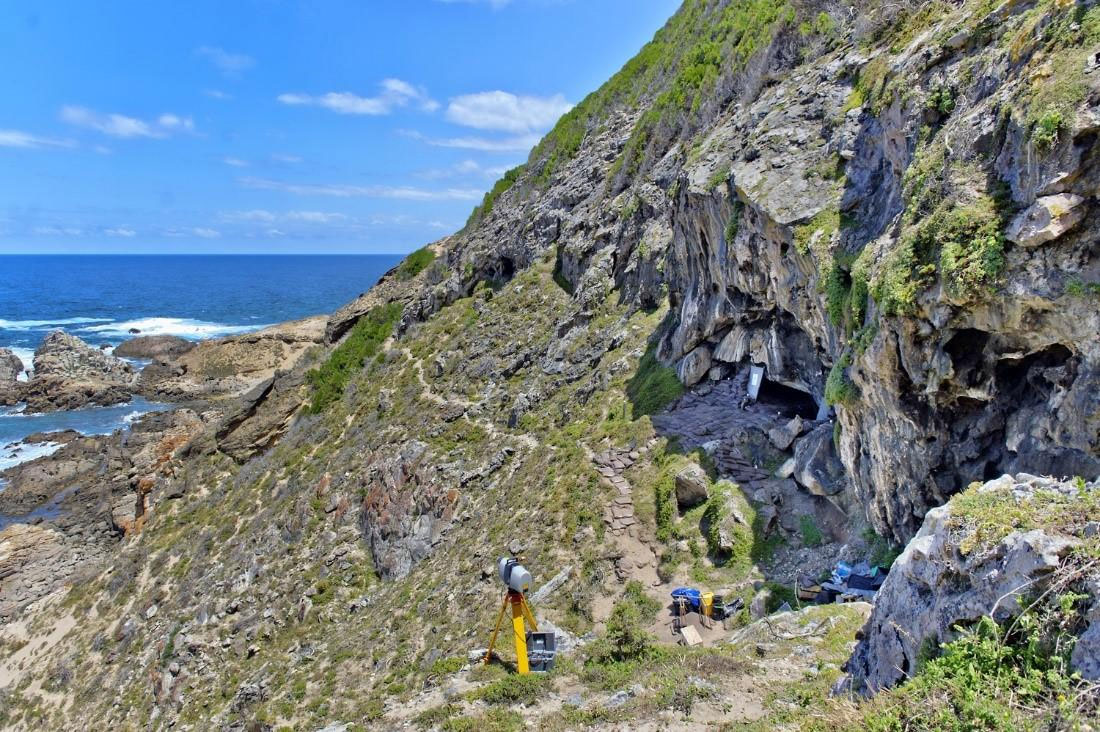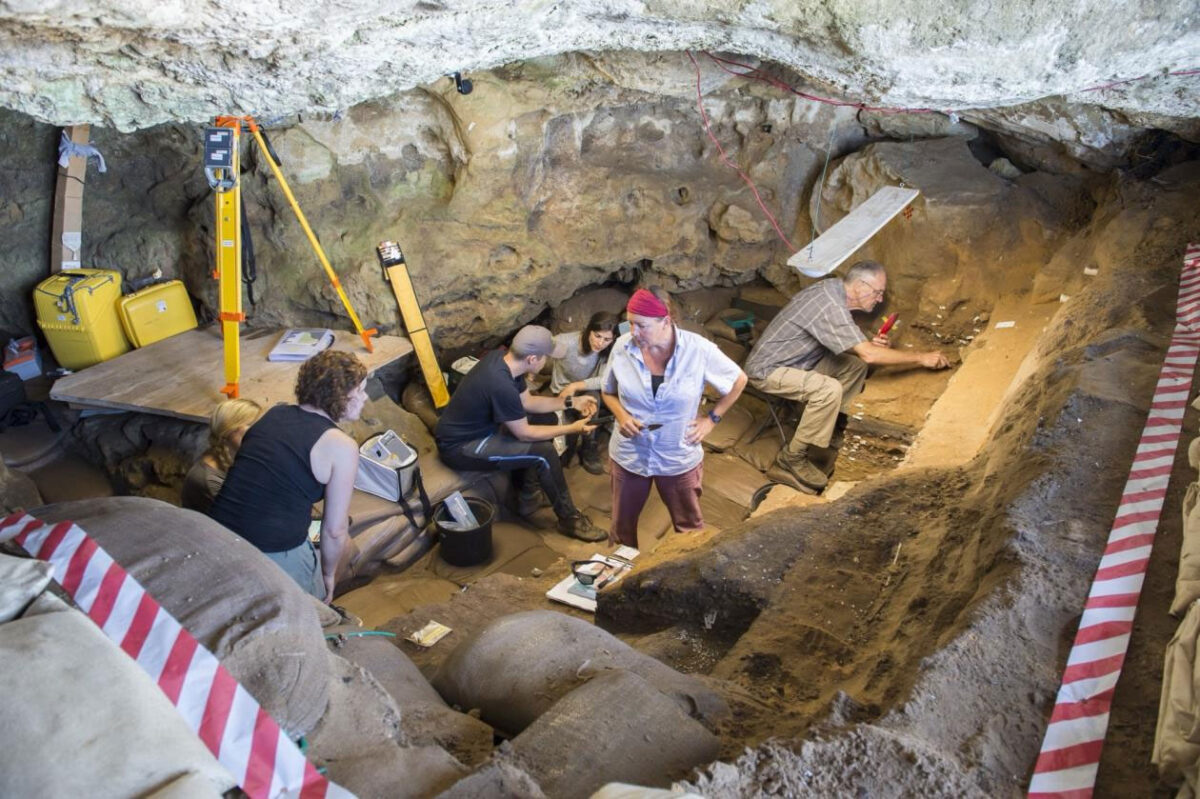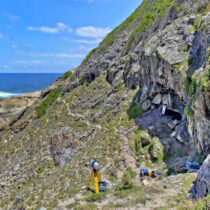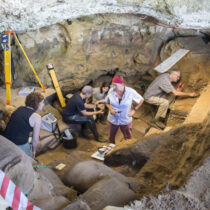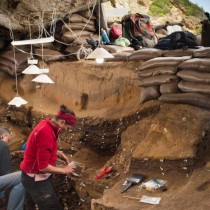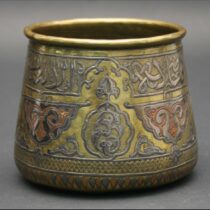A new study from SapienCE reveals that early modern humans at Blombos Cave in South Africa used ochre as a specialized tool for stone toolmaking during the Middle Stone Age, demonstrating advanced technical skills far earlier than previously believed.
“We now know that ochre was a multi-use tool that played an essential role in the daily lives of early modern humans. I believe this discovery could change how we view ochre and the past, and deepen our understanding of early human behaviour”, Elizabeth Velliky, says.
Discoveries in the Lab
Velliky made the discovery, that could reshape our understanding of early human history, while working in the SapienCE laboratory in Cape Town, alongside her colleagues Francesco d’Errico, Karen van Niekerk and Christopher Henshilwood.
Velliky was looking through artefacts from previous excavations when she noticed a piece of ochre that stood out from the rest.
The unique shape of the piece and its wear patterns, or the marks left over by human use, indicated that the ochre piece had been used in a different way than just for making pigment powder.
She took the ochre piece to show d’Errico, van Niekerk and Henshilwood. They agreed – it was special.
At first, they thought that this single piece was the only one. But over time, after sorting through boxes and boxes of artefacts, more ochre pieces with similar features began to surface. Then they knew that they were seeing a new artefact type, which up until now had only been speculated. They knew they were on the verge of a new discovery, one that would change the narrative on ochre use in the past.
Evidence of Advanced Toolmaking
The study, now published in Science Advances, examines seven ochre pieces discovered in the sediments found in Blombos Cave, dated to approximately 90,000 to 70,000 years ago.
Analyses from the experiments conducted by d’Errico et al and use-wear replication now confirm that the ochre retouchers were integral to the knapping process. This marks the first direct evidence of ochre being used as a tool for lithic retouching during the MSA, representing a significant advancement in our understanding of early human technology and behavior.
“We now know that these ochre pieces were not simply picked up and used; they were carefully modified to serve a specific technological purpose, “Velliky says.
Their morphology and wear patterns match those produced through both direct percussion and pressure flaking – a labor-intensive technique, which requires fine motor control and expert knowledge. This technique was instrumental in delicately removing small flakes from stone tools, likely used in the production of the iconic Still Bay points: bifacial tools known for their symmetrical form and advanced flaking methods, considered among the most sophisticated lithic (stone) artifacts of the African MSA.
Skilled toolmakers and group identity
The degree of standardisation and intentionality in their shaping indicates that these were not casual tools but rather personal items—possibly treasured implements belonging to skilled flint knappers.
“The sophistication of these pressure flakers implies that they were the personal property of expert toolmakers”, d’Errico, says “They may have functioned not only as practical instruments but also as indicators of identity and technical prowess”.
The discovery underscores the complexity of the technological behaviors of these people at Blombos Cave and challenges traditional interpretations of ochre as a material used primarily for symbolic purposes. The study highlights ochre’s integral role within the technological systems of early modern human communities and its possible contribution to the emergence of personal or group identity.
“We now have evidence that ochre was not only a medium for symbolic expression but also a key material in specialized tool production, reflecting a level of technological sophistication previously associated with much later periods”, says Christopher Henshilwood, archaeologist and director of SapienCE.
A key to understanding behavioral modernity
The team of researchers is hopeful that the study will inspire new discussions on the multifunctionality of ochre and its integration into both the symbolic and technological spheres of early modern human behaviour.
“This discovery will add another layer to our understanding of the behavioral modernity of early Homo sapiens in southern Africa,” says Karen van Niekerk, SapienCE Deputy Director and director of Blombos Cave excavations in recent years.
She hopes that future excavations and experiments will uncover additional evidence of ochre’s diverse roles across MSA contexts, offering deeper insights into the lifeways of early modern humans.
